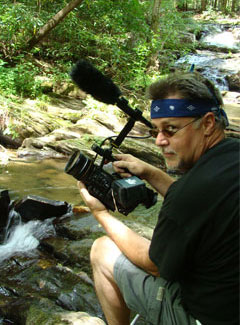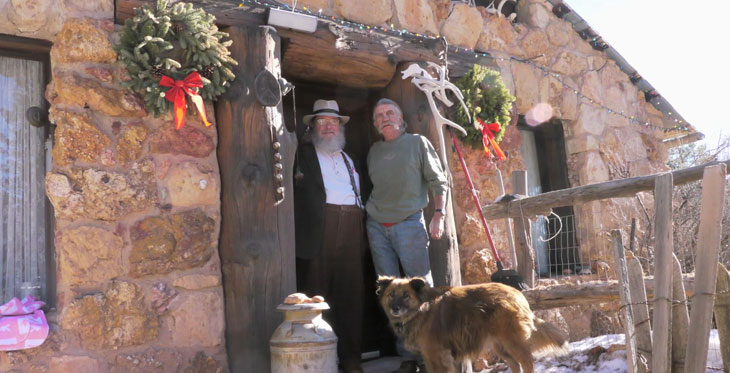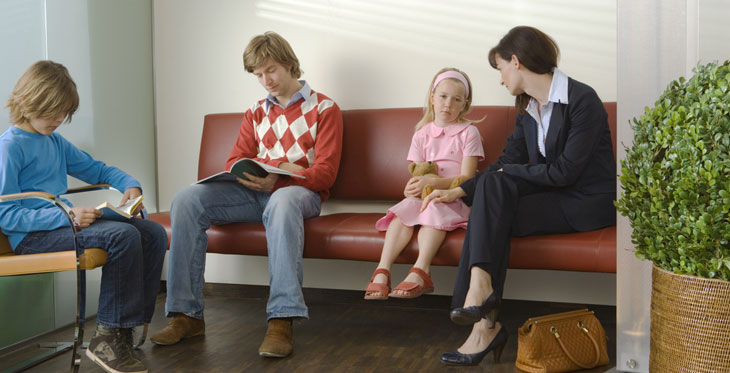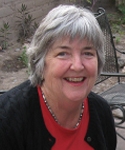Greg Hales used to really dislike going to the doctor.
“I didn’t dislike the doctor,” he says. “I just really disliked having to listen to whatever terrible news or reality show was blaring from the TV in the waiting room. It was so unpleasant. Then one day I thought, ‘Why don’t I just do something about this?’ That was when I set about creating a series of waiting room video loops, which play in North Country waiting rooms across the system."
 Since 2009, Hales has been telemedicine program manager for Flagstaff-based North Country HealthCare, northern Arizona’s only federally qualified Community Health Center, with clinics in Flagstaff and 13 other communities. For 20 years before he joined North Country, Hales was an independent video producer – creative work that he continues to do, he says, “when I can squeeze it in around all my North Country responsibilities.”
Since 2009, Hales has been telemedicine program manager for Flagstaff-based North Country HealthCare, northern Arizona’s only federally qualified Community Health Center, with clinics in Flagstaff and 13 other communities. For 20 years before he joined North Country, Hales was an independent video producer – creative work that he continues to do, he says, “when I can squeeze it in around all my North Country responsibilities.”
Those responsibilities include implementing all of North Country’s telemedicine projects, including doctor and patient visits via telemedicine, continuing medical education courses, community education programs involving telemedicine, and anything else that involves videoconferencing.
Hales’ videos are both educational and entertaining. Check out his Vimeo site.
His videos feature several of the intriguing people he has encountered throughout northern Arizona. Some are collaborations with "Letter from Home," a series of televised news features conducted by local singer and songwriter Tony Norris.

One interview features Eric Gueissaz, a North Country patient and a native of Switzerland who moved to the U.S. 50 years ago. He lives off the grid on an old copper mining claim known as "Highland Mary," near the South Rim of the Grand Canyon. Gueissaz describes his bucolic lifestyle as "almost self-sufficient, living on the cheap," with no connection to public utilities. "It's living somewhat on the edge," he says, "but it's a good edge. If I have a day when things don't go right, I just go sit at the rim of the Grand Canyon for an hour and ponder."
Hales has created North Country HealthCare “minutes” on a variety of topics, to educate patients while they wait to see their doctor. This one shows Nurse Practitioner and HIV/AIDS specialist Steve McCrosky talking about the relevance of World AIDS Day, which occurs annually on Dec. 1.
On Hales’ Vimeo site, you also can learn about North Country’s Nursing Diversity project, developed to inspire more Native Americans to pursue careers in nursing.
Another video informs families about North Country’s “Hermosa Vida” program, which teaches elementary school children about healthy eating and exercise, so they can have a “beautiful life.”
Patients can get a glimpse of the “human side” of their health care provider, Hales says, by watching "Provider Profiles" – here's an example featuring hot air balloon enthusiast Scott Sadler, who talks about why he enjoys his career. Then watch as Sadler inflates his hot air balloon and takes to the sky over Payson.
In addition to his own videos, Hales’ waiting room video loops include material from the U.S. Centers for Disease Control and Prevention, and Arizona’s First Things First early childhood develop program. His technology is relatively simple. Installed behind a waiting room TV is a media player called WDTV, for Western Digital TV. A flash drive containing the video is plugged into the media player.
According to the feedback Hales has received, he says, “Patients in our waiting rooms like the video project. They like it a lot.”
Hales cherishes the comment he received a while back from a North Country behavioral health counselor who later lost his life to cancer. “He said to me one day, ‘I really want to thank you. Patients are far less stressed when they come in than they were when they had to listen to the TV broadcasting all the bad news in the world.’
“I thought that was pretty cool.”

